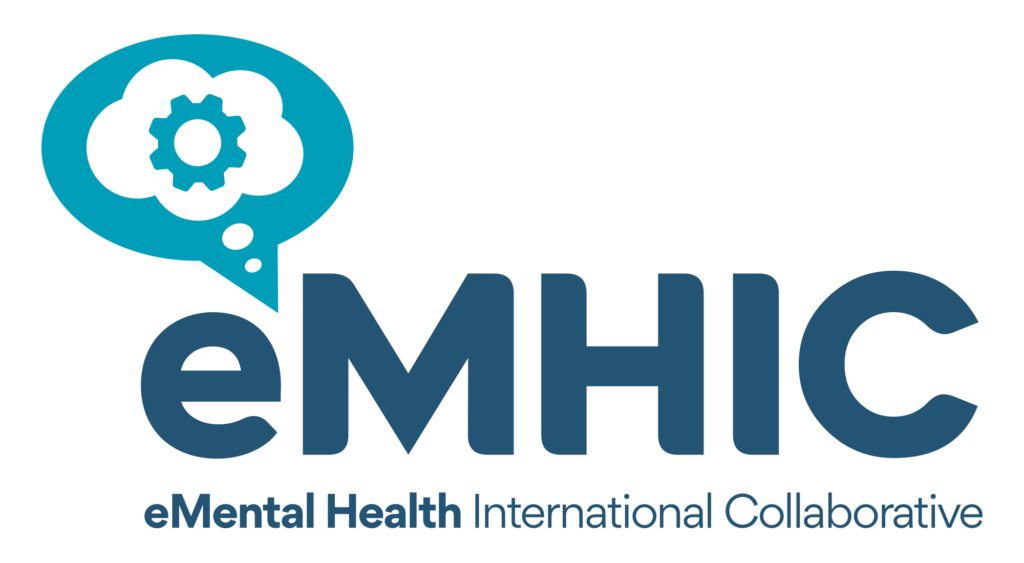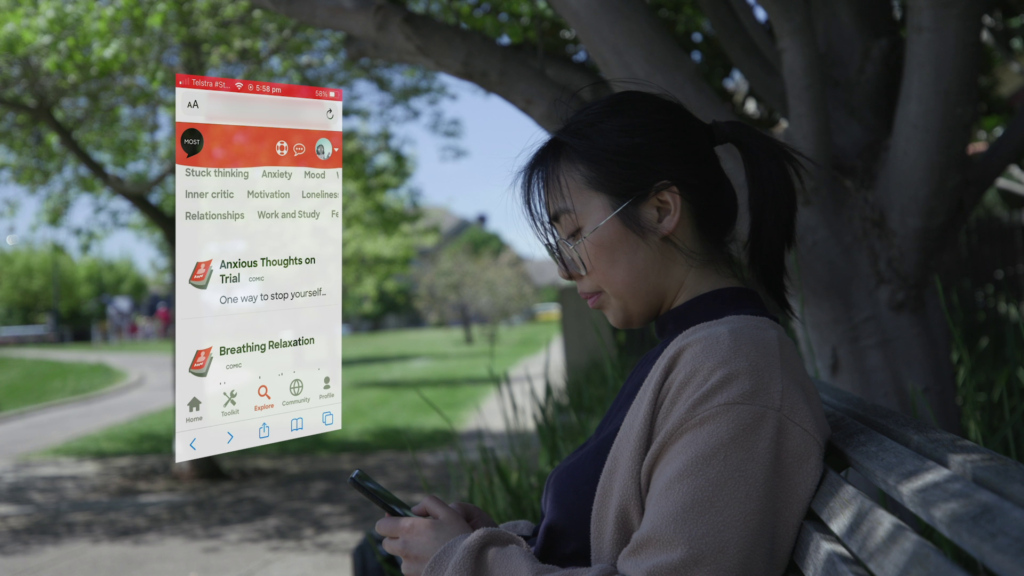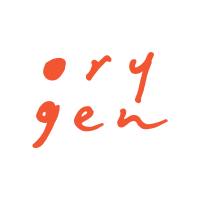In many parts of the world, the COVID-19 pandemic has placed growing and greater pressures on the mental health of young people and the services designed to support them. Young people face longer wait times to receive the help they need, and gaining face-to-face access to mental health practitioners has become more challenging.
In Australia, one in four young people experience mental health disorders every year, with suicide being the leading cause of death among young Australians. COVID-19 has exacerbated these numbers with prolonged lockdowns, employment and economic pressures and social isolation taking a significant toll on mental health.
While advances have been made in designing and implementing youth-specific mental health services, the pandemic has underscored the many barriers that still remain for young people in terms of accessing quality care.
According to the 2020 headspace National Youth Mental Health Survey[1], approximately 70 per cent of young people who considered or sought professional support during the pandemic reported facing access barriers to getting help. In addition to this, 90 per cent of services report that wait times are a major concern, with an average wait time of 25.5 days for a first therapy session.
Many young people never access evidence-based interventions.
Yet the developmental needs of young people require early intervention, specialist services that offer age-appropriate treatments and help avoid long-term disability, such as impaired social functioning, substance abuse, chronic social isolation, poor educational achievement and unemployment.
Digital therapy platforms shine in the time of COVID
The upheavals and uncertainties created by COVID-19 have underscored the importance and validity of offering young people suffering mental ill-health an efficient and evidence-based digital therapy platform.
COVID has brought a surge in telehealth adoption and digital mental health innovation that has showcased technology’s potential to overcome barriers and promote access to effective, sustainable care – whether those barriers are due to waiting lists, a shortage of available and appropriately qualified mental health practitioners, or young people being based in rural and remote settings.
Moderated Online Social Therapy (MOST) is an example of harnessing technology to support youth mental health any time and anywhere.
MOST is a world-first digital therapy platform that blends online and face-to-face therapy for young people aged 15 to 25. It has been developed by Orygen – Australia’s centre of excellence in youth mental health – and is led by Professor Mario Alvarez-Jimenez, Director Orygen Digital.
Initially trialed in the state of Victoria, access to MOST was rapidly expanded last year as part of the Victorian Government’s COVID-19 community support response. Other Australian states and territories have also committed to implementing MOST within the next 12 months; while a series of international pilot studies and academic partnerships mean MOST is also being explored in parts of the US, Canada and Europe.
MOST – an all-in-one digital application
The all-in-one digital mental health platform offers young people 24/7 access to evidence-based online therapeutic journeys, tools and programs from any internet-enabled device. The experience is tailored for each individual and overseen by clinicians, peer workers and career consultants, who provide additional support that integrates with the clinical care participants receive, or are waiting to receive, at state-funded child and adolescent youth mental health services.
For young people on waitlists for face-to-face care, a referral to MOST ensures they have access to clinical support while waiting for their first in-person appointment. They can also use MOST between clinical sessions and after they’re discharged. This eases service demand and ensures a young person receives therapeutic care and support when they need it.
In essence, MOST is a single, purpose-built system for seamless integration within youth mental health care systems across all major mental health conditions and phases of treatment.
All included therapy has been adapted and enhanced based on research, clinical expertise, digital innovation, youth feedback and usage data and the platform has been designed, developed and upgraded by an international team of researchers, clinicians, computer scientists, creative writers, comic developers and experts in human computer interaction.
Importantly, MOST has been developed in collaboration with the young people and their families it seeks to help. Therapy is embedded within a supportive online community of other young people working on their mental health and so shifts the treatment experience from being one of isolation to becoming a shared mission.
The MOST toolkit
Tools available to young people are diverse and include personalised therapy journeys based on the young person’s top five personal character strengths. Drawing on CBT, MBCT, CT, rumination-focused therapy, meta-cognitive therapy, mindfulness, self-compassion and social cognitive interventions, the therapy is written and designed by clinical content writers, including psychologists, occupational therapists and social workers, working collaboratively with creative writers and a comic artist.
Journeys are mapped against an evidence-based clinical treatment model and empower young people to learn more about managing their own mental health and working towards goals.
A toolkit of targeted coping strategies accompanies young people as they work through their journey. They collect and store activities they find particularly helpful to create their own therapy library.
The third key element of MOST is the moderated social network – a safe, private, therapeutic space where users can be themselves, learning and sharing coping strategies with their peers. Young people can connect to a virtual support network of other young people going through similar issues.
In the words of one young MOST participant, “MOST is a social media platform, but take away all of the fakeness and all of the airbrushed versions of your perfect day and your perfect life and it’s just about the raw emotions, thoughts, feelings of what you’re going through on your mental health journey. And then you have people on that same journey who are there to support you in a community space. And you also have, basically, therapy on your phone. It’s therapy on the go. So, all these tools, you can scroll through it and instead of scrolling through Instagram and feeling insecure and comparing yourself to people’s bodies, you’re reading through mindful activities, or how to challenge your anxious thoughts.”
Youth peer workers actively engage with young people on the social network, but they’re also trained to monitor online chats and activity logs, under the supervision of MOST clinicians, to identify and follow up on any indicators of deteriorating wellbeing or inappropriate use.
The results so far
The platform’s performance has been rigorously monitored with the foundation study for MOST, Horyzons, published in World Psychiatry. The 170 participants in the Horyzons study were aged 16 to 27 and were in clinical remission and nearing discharge from Orygen’s specialist service for first episode psychosis.
Half of the participants used the Horyzons online platform to access psychoeducation, evidence-based therapy, pathways for achieving vocational outcomes and real-time access to online peer workers, clinicians and vocational support workers.
The study found young people accessing Horyzons while recovering from first episode psychosis had a 5.5 times greater increase in their likelihood of finding employment or enrolling in education compared to those receiving treatment as usual. They were also 50 per cent less likely to visit emergency departments or be admitted to hospital after completing the digital intervention than young people receiving standard treatments. Horyzons is now MOST.
“Vocational outcomes are a hallmark of achieving long-term recovery,” says Professor Alvarez-Jimenez.
“Once young people lose their job, lose contact with their peers or drop out of university, that has a whole host of implications in terms of long-term disability – at some point they may never catch back up.
“Hospital admissions and visits to emergency services are incredibly disruptive, costly and very stressful for young people. The more relapses you have, the more likely you are to accumulate disability, and also to experience another relapse. Preventing local hospital admissions and use of emergency departments is one of the core goals of early intervention services for young people with psychosis.”
How young people are responding to MOST
In-depth interviews with Horyzons participants also found that young people used the Horyzons online therapy component in five main ways which remain valid for MOST:
- On demand help-seeking during crises
- Positive distraction from negative thoughts and voices
- Revision of mental health strategies learnt during previous treatment
- Generalisation and translation of psychological strategies into their everyday lives
- Normalisation of mental ill-health.
More recent research from a pilot integrating MOST within clinical services demonstrates that MOST continues to have positive impacts on the mental health and lives of young people. The survey found:
- 97 per cent of young people using MOST felt safe
- 88 per cent of young people were willing to use MOST again
- 87 per cent found MOST helpful
- 94 per cent of young people would recommend MOST to others
- 97 per cent of young people found using MOST to be a positive experience.
Direct feedback received from these young people using MOST has been positive:
“I liked the content and I thought it was actually really helpful, and it was laid out in a way that was … quite casual and a bit more relatable, [using] real life relatable experiences.”
“It felt like when I was doing the program and having appointments with [my clinician], like it was part of like my therapy sessions.”
“It helped me get through because I knew that I wasn’t alone and there was always someone to turn to – I was able to interact with moderators, staff and peers who had been through the same kind of thing…the toolkits, therapy comics and little step-by-step guidelines helped with things like how to stop, breathe, relax and go one step at a time.”
What their clinicians say
Clinicians have also recognised the benefits for young people of blended digital and face-to-face mental health support:
“I think MOST complements the work we do quite well. I think it will continue to keep that feeling of connection with clients between appointments. That’s what I’m hoping it will do, that continuity and giving clients a sense of autonomy in their care as well”
“Thanks for the update. One of the doctors and I reviewed [young client] today. She does appear to have deteriorated, so it was really helpful you’ve been able to flag this with us. We’ve done some safety planning and will follow her a bit closer.”
“There is really good quality structured psycho-social psychotherapeutic content on MOST and I know a lot of thought and energy and expertise has gone into that. For me the upside of that is – it’s not easy to get young people to want to go away and work on therapeutic content – this is a mechanism that can allow young people to access it when they want, to browse through it in their own time, and I think that there’s going to be more likelihood that they’re going to want to have a go at doing that stuff if they can access it soon after they’re feeling like they need it.”
Further funding and expansion
In 2019, the Victorian government in Australia provided $6 million in funding to support the rollout of MOST. In June 2021, the government in Victoria committed a further $12 million in funding over two years to support the adaptation and extension of MOST, including a pilot program of bespoke clinical content for younger people aged 12 to 14.
“We know therapy doesn’t always connect with young people,” says Professor Alvarez-Jimenez.
“But the technology, research and unique blended mental health care model behind MOST is changing the way we provide mental health services to young people, so they get the help they need, when they need it in a way that truly engages them with the therapy.”
Find out more: orygen.org.au/most
Introducing MOST video
[1] Insights: youth mental health and wellbeing over time, headspace National Youth Mental Health Survey 2020, headspace.org.au




